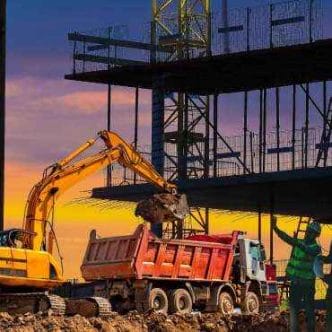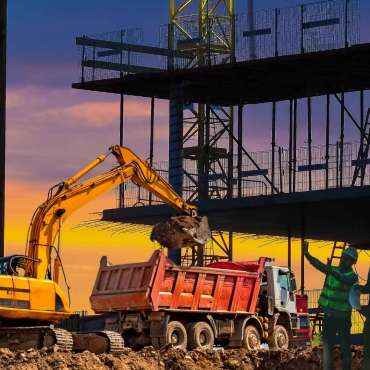On August 30, 2024, Prime Minister Narendra Modi visited Maharashtra to lay the foundation stone of the Vadhvan Port project worth ₹76,000 crores in Palghar, while also addressing the Global Fintech Fest 2024 in Mumbai. “This is a very important project, signifying our commitment to port-led development and to the progress of Maharashtra,” posted PM Modi on X.
The announcement of the Vadhvan Port project is a testament to India’s commitment to large-scale infrastructure development and its broader ambition to become a global economic powerhouse. However, as the nation embarks on yet another mammoth venture, it is crucial to ponder: Do megaprojects actually deliver on their promises, or do they end up being just big and flashy? As India and other nations continue to invest billions in these grand undertakings, it’s crucial to examine whether they truly provide value or simply serve as symbols of ambition.
Symbols of Human Ambition
Megaprojects, like the Vadhvan Port project, are often seen as the ultimate testaments to human ambition and creativity. They are massive undertakings—financially, logistically, and politically. These projects strive to redefine landscapes and elevate economies, aiming to leave a lasting legacy. But they are more than just big investments; they represent humanity’s desire to push the boundaries of what is possible.
Historically, some of the world’s most iconic megaprojects have been transformative. Take the Panama Canal, which redefined global trade routes, or the Hoover Dam in the United States, which showcased early 20th-century engineering prowess and provided critical water and power resources. Similarly, modern megaprojects like the International Space Station (ISS) demonstrate unparalleled international collaboration and scientific achievement.
However, for every successful megaproject, there are cautionary tales. Overambitious designs, inadequate planning, and a lack of alignment with local needs can result in colossal failures—sometimes leaving behind ghost towns or infrastructure that barely serves its purpose. For every Burj Khalifa that stands as a symbol of prosperity, there are examples like China’s empty cities, where vast investments ended up being more burdens than boons.
The Making of a Megaproject
Creating a megaproject is a Herculean endeavor that involves years, if not decades, of meticulous planning and execution. It’s not just about putting up structures; it’s about orchestrating a complex symphony of stakeholders—governments, multinational corporations, international agencies, and countless professionals, each bringing their unique expertise to the table.
The process begins long before any construction work. Feasibility studies, environmental assessments, and financing negotiations can take years to finalize. Once these preliminary steps are cleared, detailed designs are developed, followed by securing permits and regulatory approvals. Even after breaking ground, megaprojects face hurdles like cost escalations, technical difficulties, and public opposition. Yet, despite these obstacles, when successful, they can bring about profound societal change.
Several global firms play pivotal roles in the successful execution of these projects. For instance, Bechtel Corporation, one of the world’s largest engineering and construction companies, has been a key player in projects like the Channel Tunnel and Jubail Industrial City. Similarly, AECOM has contributed to the success of the Crossrail project in London, while Arup’s engineering expertise has shaped iconic structures like the Sydney Opera House.
But the question remains: Why do some megaprojects succeed where others fail? Often, it comes down to a combination of strategic planning, stakeholder collaboration, and adaptability to changing circumstances.

Factors Behind Success and Failure
What’s the secret recipe that turns some megaprojects into shining examples of human achievement, while others become cautionary tales of what not to do?
It usually boils down to a few critical factors:
What Makes a Megaproject Successful?
- Strategic Planning: It all starts with a solid plan. Successful megaprojects are backed by meticulous planning that considers everything—demand, environmental impact, long-term sustainability, and every little hurdle that might pop up. Think of it like building a house: if you skip planning the foundation, no amount of fancy wallpaper can save it from crumbling.
- Strong Stakeholder Collaboration: Building a megaproject isn’t a one-person show. It requires effective coordination between governments, private firms, and local communities. Everyone has to be on the same page, or else even the most well-conceived project can go off the rails. Picture it as a team sport—one miscommunication, and it’s game over.
- Financial Stability: Funding is the backbone of any megaproject. Without adequate financial backing and sound financial planning, projects can quickly turn into money pits, stalling halfway or becoming black holes for public funds. It’s like starting a marathon without checking if you have enough water to last—you’re setting yourself up to fail.

Why Do Some Megaprojects Fail?
- Misaligned Planning and Demand: One common issue is projects that are built without considering the actual needs of the market or the people. For example, constructing a massive business district in an area with no businesses or demand leads to ghost towns and empty skyscrapers. If you’re building something nobody needs or wants, it’s bound to flop.
- Geopolitical Risks: Political instability or over-reliance on foreign funding can throw a wrench into even the best-laid plans. Shifting political landscapes, wars, or changing government policies can derail projects or leave them half-finished, bleeding money. This is especially tricky for international projects where differing interests come into play.
- Social and Environmental Costs: When megaprojects ignore social and environmental factors, it’s only a matter of time before backlash ensues. Displacing communities or wreaking havoc on the environment without proper consideration leads to public protests, delays, and sometimes, project abandonment. No one wants to live near a project that’s more trouble than it’s worth.

In the end, successful megaprojects are the ones that balance ambition with realistic planning and respect for the environment and communities they impact. It’s not just about being big; it’s about being smart.
The Future of Megaprojects: Evolving Trends and Challenges
The landscape of megaprojects is evolving, with new trends emerging that focus on sustainability and technology integration. The rise of smart cities, renewable energy megaprojects, and digital infrastructure projects are shaping the future. However, these trends also bring challenges, such as ensuring equitable development and managing the impacts of rapid urbanization.
Sustainability is now at the forefront of modern megaprojects. The focus has shifted towards minimizing environmental impacts, incorporating renewable energy sources, and ensuring that social equity is considered. Projects like green skyscrapers and carbon-neutral cities are starting to set new benchmarks for what large-scale infrastructure projects should strive for.
The question remains: Are megaprojects truly better, or do they merely represent bolder aspirations? While they have the potential to transform societies and economies, they come with considerable risks and trade-offs. The true measure lies not in the sheer scale, but in sustainable projects that are inclusive, and aligned with the real needs of people. As we look to the future, it’s crucial to build responsibly, minimizing costs and maximizing positive impact.
____________
Written By: JK Pandey















